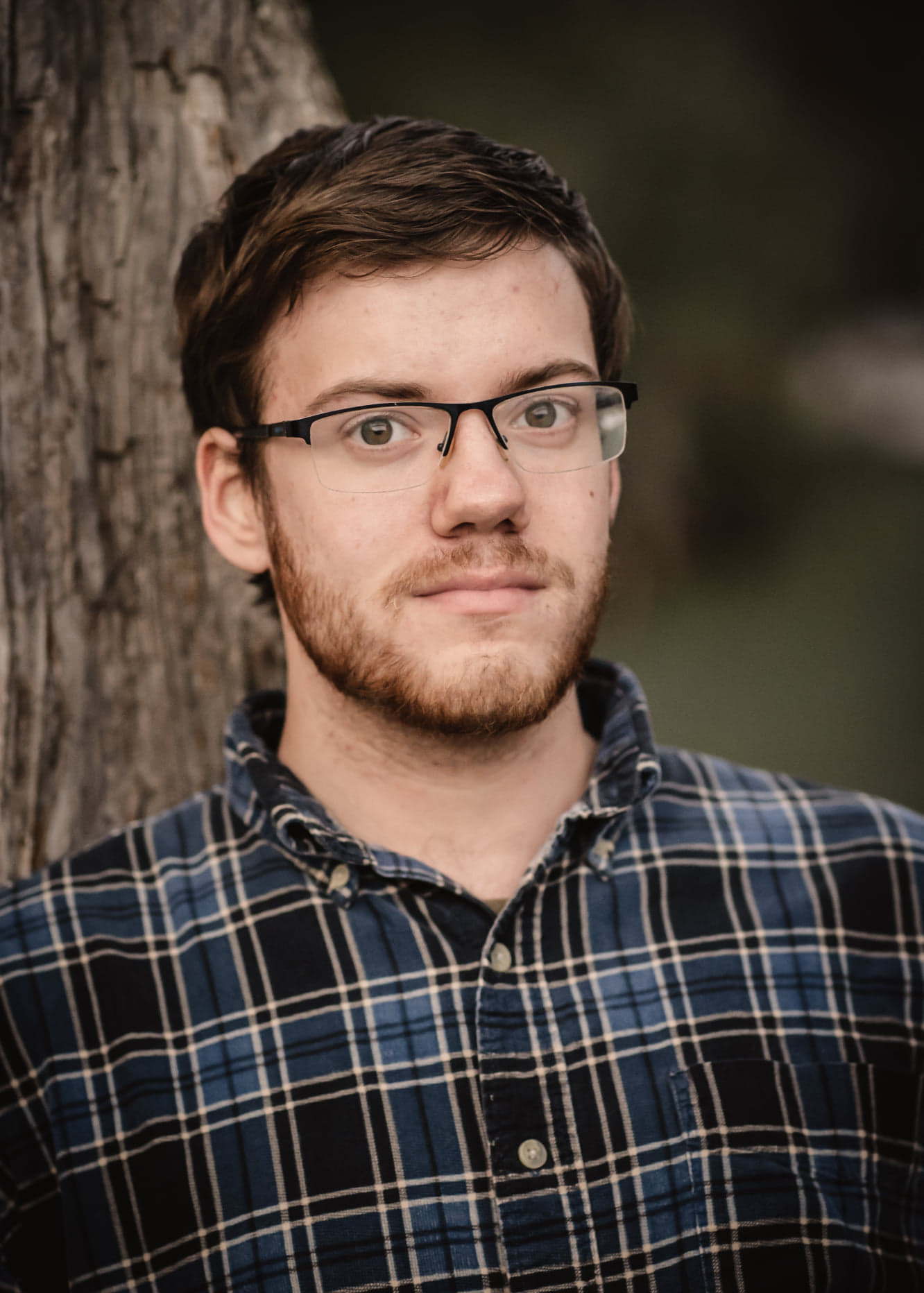While he never achieved great fame during the Civil Rights movement, Clarence Jordan’s fight against racism during the 1940s-1960s has inspired many. He chose a unique way to combat evil: creating a Christian farming community that deliberately lived in a countercultural way. His community played a key role in helping found Habitat for Humanity International. Christian leaders, from former president Jimmy Carter to theologian Russell Moore, have praised Jordan’s gospel-centered approach to community and racial reconciliation.
So what made Clarence Jordan’s work so radical?
What Did Clarence Jordan Do to Fight Racism?
Jordan was born on July 29, 1912, in Talbotton, Georgia. Like most Talbotton residents, his parents attended a Southern Baptist church and worked in sharecrop farming. However, unlike many residents, his mother hated guns—a firearm accident had killed her father. Frederick L. Downing notes in An Inconvenient Gospel that her aversion to guns and emphasis on mercy toward others influenced Jordan for the rest of his life.
However, Jordan’s desire to love people led to some messy conflicts. Like many Southern farming families, his father participated in sharecropping. Sharecropping developed after the Civil War as a financial plan to rent land to lower-income farmers (mostly African Americans whose enslaved families had worked on the same land). Low wages meant that few African-American families made enough money to leave the area. Seeing sharecropping’s effects on tenants troubled Jordon. He began considering ways to help African Americans escape economic plans that held them in bondage.
Jordon initially decided he could help by learning better agriculture methods to pass on to sharecroppers. With new methods, they could raise more produce and escape poverty. Jordan graduated with a degree in agriculture from the University of Georgia in 1933.
However, Jordan concluded that better farming was not enough. He saw racist systems keeping people in poverty as inherently a spiritual problem, requiring spiritual as well as material solutions. He enrolled in Southern Baptist Theological Seminary in Louisville, Kentucky, in the autumn of 1933.
By the time Jordan graduated in 1938 with his PhD in New Testament Greek, he had a plan for his ministry. He also had a spouse who shared his vision—he married seminary librarian Florence Kroeger in 1936.
Their plan was twofold. They would start a Christian community built on early church values, as seen in verses like Acts 2. The community would be an interracial group dedicated to pacifism, common possessions, and tending the farmland they lived on. Furthermore, Jordan would challenge people to think about how much their culture compromised the Bible’s ideas. He planned to release a Bible that paraphrased the stories into modern-day American language and cultural references—the story of Jesus if he lived in the modern American South.
Martin and Mable England joined the Jordans’ vision. In 1942, the two couples purchased a plot of unwanted farmland in Americus, Georgia. They named it Koinonia Farm—koinonia is a New Testament Greek word for fellowship.
Koinonia Farm grew to include many members and even received support from noted Christian leaders. Dorothy Day stayed at Koinonia Farm on at least one occasion, in 1957. Martin Luther King Jr. sent Jordan a letter praising his work.
However, life in the community was never easy. Civil Rights activist Will Davis Campbell recalled that he met Jordan in 1946 and visited Koinonia Farm multiple times over the next few years:
“There was always a mixture of joy and dread going to see them. Joy because it was exhilarating to spend a few days in the presence of what I considered authentic gospel living. Dread because no one could anticipate what sort of tribulation might be visited on the community at any time. Firing upon children at play. Burnings of buildings. Threats at all hours. The total boycott of the things they produced and denial of the things they needed.”
Initially, the opposition came from authorities who disliked Jordan’s pacifism—he was nearly charged with sedition in 1949 for advising several young men against military service. In the 1950s, people increasingly opposed Jordan’s stance on race. In 1950, Rehoboth Baptist Church expelled him for bringing racial minorities into the congregation. In 1956, Jordan provided a reference for two African-American men who wanted to study at the Georgia State School of Business. In response, local police investigated him. The same year, local businesses began boycotting Koinonia Farm goods, which affected the group’s income.
Koinonia Farm also faced intimidation from larger groups. During the Civil Rights period, the FBI frequently monitored people promoting racial integration on the suspicion they were connected to communist causes. Agents investigated Jordan and other Koinonia Farm members throughout the 1950s-1960s. Klu Klux Klan members threatened Koinonia Farm multiple times—including a 150-member motorcade driving past the property on February 27, 1957.
Violence led to many people leaving Koinonia Farm by 1960, but Jordan would not stop. He spoke at churches about racial reconciliation as essential to the gospel. He continued his Bible translation project, now titled The Cotton Patch Gospel.
A shift came in 1965 when millionaire couple Millard and Linda Fuller joined Koinonia Farm. After living on the farm for three years, they developed a home-building model that combined their financial experience with Jordan’s emphasis on communities helping people escape poverty. Their model, partnership housing, used fundraising, zero-interest loans, and families helping build the homes to create affordable housing. Funds would carry over and be invested into the next building project, establishing a Fund for Humanity.
Jordan supported the Fullers’ work, starting Koinonia Partners to help build the first partnership house in Sumter, Georgia. He passed away on October 29, 1969, months before the house’s completion. The Fullers moved to Africa in 1973 to test their model internationally. They returned with success in 1976 and formalized their organization: Habitat for Humanity International. Today, the organization’s website lists Jordan as the “spiritual father” of Habitat for Humanity International.
Koinonia Farm still exists in Georgia, supported by members like Bren Dubay. New generations of believers are discovering Jordan’s writings and considering how his ministry model can inspire Christian communities today.
10 Inspiring Clarence Jordan Quotes
The following quotes are taken from profiles of Jordan or collections of his sermons:
1. Days after Rehoboth Baptist Church expelled Jordan, an elder came to apologize and said he was considering leaving the church. Jordan replied, “You don’t get out of the church. You live so that they kick you out.”
2. “We will never enter into a kingdom of brotherhood with lines of segregation all about us.”—from the sermon “Metamorphosis.”
3. Writing about spiritual apathy and how the parables call Christians to countercultural living, Jordan observed, “By and large, I think, Christians are good people. They’re nice, middle-class, suburban people. They’re well-educated; they mean well. They don’t hate Jesus! In fact they love him, if he’ll stay in his place.”
4. “You can’t put Christianity into practice. You can’t make it work . . . For Christianity is not a system you work—it is a Person who works you.” — from the sermon “Impractical Christianity.”
5. In “Incarnational Evangelism,” a sermon about the Holy Spirit’s power, Jordan observed, “Wait a minute now, don’t get too anxious to solve all the world’s problems. Waiting until you’re clothed with power from on high can be a very important part of solving these problems.”
6. “In the New Testament we fail to find any instance where Jesus allowed himself to be swept along with the prevailing currents of racial antipathy. He rebuked no other group so severely as the Pharisees, whose very name in the Hebrew means ‘separator,’ one who separates oneself from others. The Master also took great pains to show the folly of racial hatred between Jew and Samaritan.” — from the sermon “White Southern Christians and Race.”
7. “Any step forward, spiritually, always opens out upon vistas where the entire terrain may appear to be new and unfamiliar.” —from the sermon “No Promised Land without the Wilderness.”
8. In his sermon “The Ten Commandments,” Jordan explained the danger of idolatry by recalling a Klu Klux Klan rally that received a pastor’s blessing before coming to threaten Koinonia Farm. Jordan reflected, “We’ve got to have a god that will fit into our little mold of things. We want to create him after our own ideas.”
9. “The parables of Jesus help us see two realities: the reality of a world whose values must be rejected, and the reality of a new world whose values must be accepted.” — from the sermon “Shattering the Status Quo.”
10. In a sermon “Love Your Enemies,” Jordan ended by highlighting the Bible’s final verdict on why we should love those who oppose us: “For when the cards are all in, and the final chapter of history is written, when time is rolled up as a garment, and God is all and in all—on that final day it will be the peacemakers, not the warriors, who will be called the children of God.”
10 Great Books by Clarence Jordan
While Jordan’s work on Koinonia Farm was his primary pursuit for many years, he took time to write and preach. His best-known writings are the Cotton Patch books, which cover much of the New Testament. Some books paraphrase individual books of the Bible (like James). Others paraphrase several books (like Colossians and 1-2 Thessalonians). The following list shows these works as well as collections of his sermons and other writings.
1. Sermon on the Mount
2. The Cotton Patch Gospel: Matthew and John
3. The Cotton Patch Gospel: Luke and Acts
4. The Cotton Patch Version of Hebrews and the General Epistles
5. The Cotton Patch Version of Paul’s Epistles
6. Cotton Patch Parables of Liberation dited by Bill Lane Doulos
7. The Cotton Patch Gospel: The Complete Collection
8. Clarence Jordan: Essential Writings edited by Joyce Hollyday
9. The Inconvenient Gospel: A Southern Prophet Tackles War, Wealth, Race, and Religion edited by Frederick L. Downing
10. The Substance of Faith and Other Cotton Patch Sermons edited by Dallas Lee.
The Cotton Patch books also inspired the musical Cotton Patch Gospel, book by Tom Key and Russell Treyz and the music and lyrics by Harry Chapin.
10 Books about Clarence Jordan and Koinonia Farm
Many excellent scholars have discussed Jordan’s life and legacy.
1. The Cotton Patch Evidence: The Story of Clarence Jordan and the Koinonia Farm Experiment (1942–1970) by Dallas Lee
2. Cotton Patch Rebel: The Story of Clarence Jordan by Ann M. Trousdale
3. Clarence Jordan: Turning Dreams Into Deeds by Henlee H. Barnette
4. Clarence Jordan: A Radical Pilgrimage in Scorn of the Consequences by Frederick L. Downing
5. Koinonia Remembered: The First Fifty Years edited by Kay N. Weiner
6. Roots in the Cotton Patch: The Clarence Jordan Symposium 2012, Volume 1 edited by Kirk Lyman-Barner and Cori Lyman-Barner
7. Fruits of the Cotton Patch: The Clarence Jordan Symposium 2012, Volume 2 edited by Kirk Lyman-Barner and Cori Lyman-Barner
8. Interracialism and Christian Community in the Postwar South: The Story of Koinonia Farm by Tracy Elaine K'Meyer
9. Biography as Theology: How Life Stories Can Remake Today's Theology by James Wm. McClendon. This book discusses Jordan alongside noted Christian leaders Martin Luther King Jr., Dag Hammarskjold, and Charles Ives.
10. Cotton Patch for the Kingdom: Clarence Jordan's Demonstration Plot at Koinonia Farm by Ann Louise Coble
There are also two excellent documentaries about Jordan and Koinonia Farm.
Enough to Share: A Portrait of Koinonia Farm (1983) features the first generation of Koinonia Farm members discussing their history.
Briars in the Cotton Patch: The Story of Koinonia Farm (2003) provides a fuller overview of the Koinonia Farm history.
More information about Koinonia Farm can be found on its website.
Photo Credit: © Getty Images/PeopleImages

This article is part of our People of Christianity catalog that features the stories, meaning, and significance of well-known people from the Bible and history. Here are some of the most popular articles for knowing important figures in Christianity:
How Did the Apostle Paul Die?
Who are the Nicolaitans in Revelation?
Who Was Deborah in the Bible?
Who Was Moses in the Bible?
King Solomon's Story in the Bible
Who Was Lot's Wife in the Bible?
Who Was Jezebel in the Bible?
Who Was the Prodigal Son?









